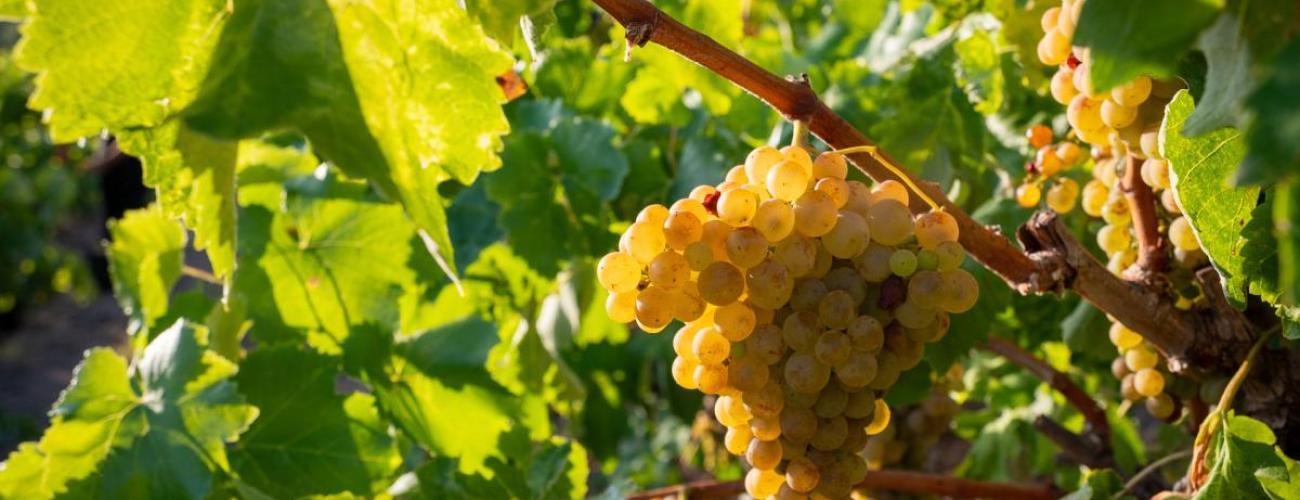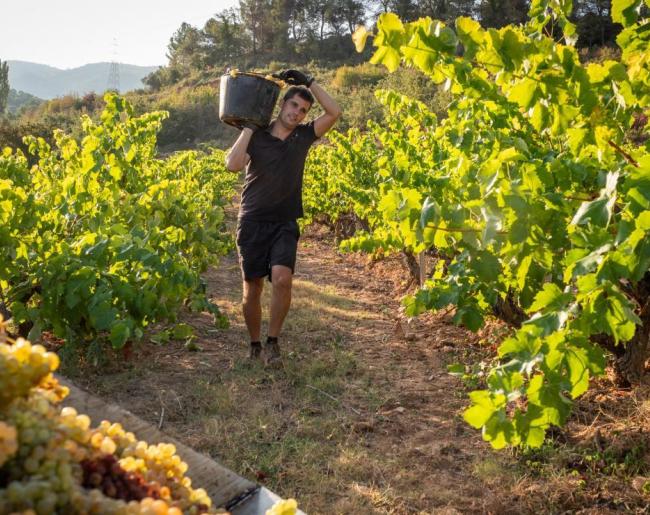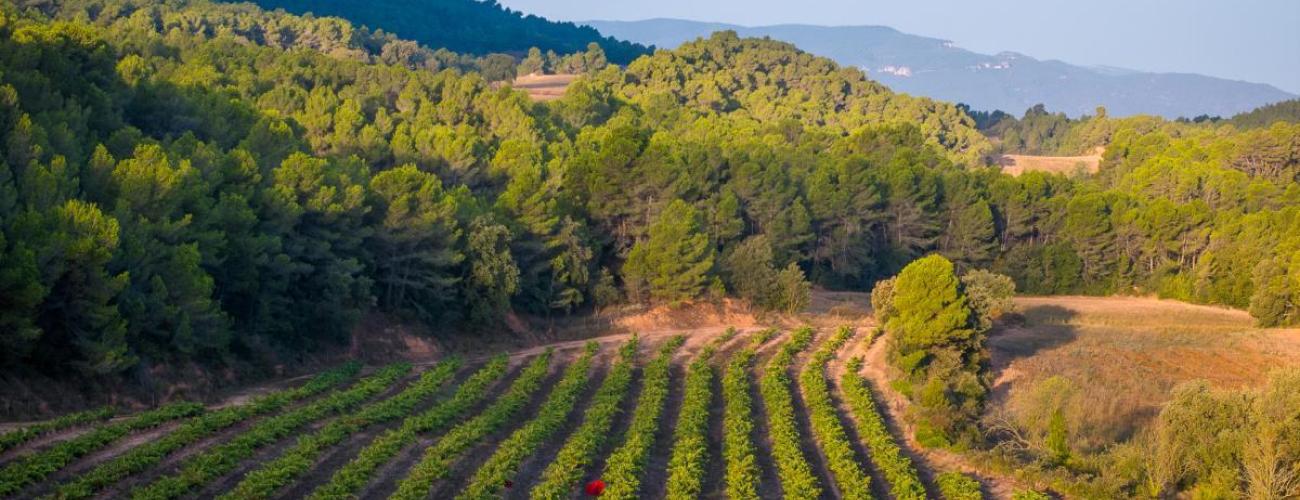Thucydides said that the peoples of the Mediterranean began to emerge from barbarism when they learnt to cultivate vines and olive trees. Throughout history, wine has been prescribed as a digestive, a cleansing agent, as well as for flatulence, fever, as a laxative, to stop bleeding and as an antidote to snake bites. Midwives were even served a glass of wine before the delivery. And if babies didn't cry for the first time shortly after being born, they were immersed in a vat of wine. It's not known whether any of these curious remedies were used in our region, but when it comes to telling the history of wine, Tarragona has a lot to tell.
The amphora that appears in the logo of DO Tarragona, created in 1945 to protect liqueur wines, offers the first clue. In Roman times, Tarraconensis exported wine to different parts of the empire, including Italy, Gaul, Germania and Britain. Authors such as Juvenal, Silius Italicus, Florus, Martialis and Pliny the Elder had no hesitation in describing the Conventus Tarraconensis as very fertile and affirmed that a wide variety of high-quality wines were produced there. Pliny even spoke of the best in the entire empire. Thanks to the great work of the Tarraco Viva, we know that convivia, gatherings for eating and drinking, were held in the triclinium (the formal dining room) of people's houses. In Roman times, the last part of the feast was the comissatio, for which wines were served that were much better than those usually served in taverns, such as Falerno, Cécubo, Albano, as well as wines from the province of Tarraconensis. There was also a person called the arbiter bibendi whose job was to decide how many glasses each guest would drink and what proportions of hot, cold and sea water and even honey and spices would go into the wine, as well as for ensuring that the intellectual level of conversation was maintained as much as possible.
After the fall of the Roman Empire, there was a major decline in winegrowing. Monasteries took it upon themselves to revive it, both because of their need for wine for liturgical use, and in daily life as a substitute for water, which was not entirely drinkable. Chapter 40 of the Rule of Saint Benedict —there were several Benedictine convents in the Tarragona region— is called The Proper Amount of Drink with the accompanying text There should not be drunkenness. To take account of human weaknesses, it appears that one hemina of wine (just over a quarter of a litre) per monk per day was considered adequate. However, the superior had the discretion to increase the quantity if the circumstances of the work or the heat required it. And above all, it emphasises that you should not drink to excess, but in moderation; wine can lead even the wise astray.

After the phylloxera crisis, winegrowing in the Tarragona region experienced a resurgence, and with it the cooperative movement. The cooperatives opted for the Macabeu grape variety instead of Parellada (which grows at higher altitudes) and Xarel·lo (which produces low yields in the region) and sold their harvest to the cava industry. At the London Universal Exhibition of 1862, 101 of the 189 exhibitors of Catalan wines came from Tarragona, and at the Paris Exhibition of 1878 the figure had risen to 216. The city's name had been paired with the world of wine.

© Rafa Pérez
In recent years, some producers in the Tarragona region have realised that Macabeu can be used to make very unique and high-quality wines when produced in limited quantities. The winegrowers have to be extremely skilled in their craft, as they have to deal with rugged terrain reinforced with dry stone walls and a relatively thin, calcareous soil. Oriol Pérez de Tudela (Vinyes del Tiet Pere, Vilabella), one of the greatest advocates of the potential of Macabeu, explains that the terrain of Tarragona's vineyards, with a large part of the vines in the upper reaches of the Gaià river, means that the variety can reach 11–12 percent alcohol by volume with little acidity. However, this is offset by a characteristic that makes it unique among the winegrowing regions: its salinity, which gives the wine freshness.
The reason for this is its proximity to the Mediterranean Sea, which can be seen from many of the vineyards and from which the sea breeze known as ‘la marinada’ comes. This gentle wind arrives on a daily basis, rustling leaves from midday onwards. For about seven hours, it leaves a trace of salty humidity that lightly bathes the fields. The exceptional character of Tarragona's Macabeus is complemented by other very intriguing flavours, such as peach and apricot, and almond and almond blossom, an ideal combination for pairing with some of the most typical products and dishes of Tarragona's cuisine, such as Romesco and oily fish. The salty structure of Macabeu wines enhances their flavour without overpowering them with fruit or acidity.

Another iconic grape variety grown in Tarragona's vineyards is the Xarel·lo, a red grape variety known locally as cartoixà vermell. An interesting effort is currently underway to bring the variety back to Tarragona, a red grape variety that was lost with the appearance of phylloxera. In three or four years' time, we may see the first experimental wines made from this grape variety, a variety that alludes so strongly to our city and highlights what the wines of the Tarragona region offer us: history and territory in a bottle. A good example of this can be found in one of the wines from Mas Vicenç, a Macabeu from a hundred-year-old estate aged in amphorae. This family winery in Cabra del Camp offers a range of wine tourism activities among its vineyards. You are invited to enter their farm and take a stroll through the vineyards to learn more about the origin of the wines, the biodiversity of the region and the architecture of the dry stone walls. In a hut you will find fresh water in a jug and enjoy a sip of wine accompanied by olives and nuts. A breakfast of arengada (traditional pressed and brined sardines), chocolate and wine pairings with handmade pastries from a local pastry chef, Nordic walking or taking part in the grape harvest festivals are just a few of the other activities on offer.
Tarragona is a city with a strong sense of kinship with the other nearby wine regions —there are four more in the immediate vicinity of the city— acting as its great culinary epicentre, whose leading light is Macabeu, a variety that at these latitudes offers all the freshness of the Mediterranean.
The Romans celebrated vinalia, festivals to bless the new wine: the vinalia urbana in April and the vinalia rustica in August to ask for a good harvest. Today, we also celebrate the rewards of a good harvest. In November, the Santa Teca association, in conjunction with Tarragona Turisme, puts on L'Embutada, a festival which revives the memory of the city's winemaking tradition and the custom of tasting the new wine through an embut (brass funnel).